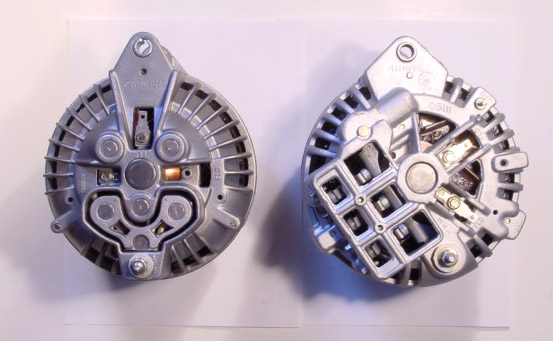MrDuster
Well-Known Member
Fella's, please help me solve this problem I'm having. Stock '71 street car with 1 year old auto zone replacement alternator (has only 1 field instead of two--blue wire goes to the field and green goes to nothing...alternator has std post for black wire to battery). No aftermarket amp-drawing stuff installed in car. NAPA Legend battery (new one in now). Voltage regulator on engine back firewall infront of driver has a two prong connection with one blue and one green wire..That's what I got, here's the story...This morning I saw white residue around the battery and attributed to a battery that was venting too much...cleaned it up and drove 30 miles. When I opened the hood to show a car buff the engine we both noticed the battery bulging and it seemed hot. I also noticed paint peeling above the battery on the underside of the hood. I drove straight to the nearest NAPA store and got another battery as the guy there thought a plate must be shorting out in the battery...although he mentioned it could be my voltage regulator. Getting home I tested the battery and found it was being charged at 16.83 volts! Buddy helped me troubleshoot. With voltage regulator plug disconnected pulled 17 volts-all measurements at the battery on the posts. We disconnected the hot wire on the back of the alternator and taped it off. Voltage was now 12.8 before and after starting...that made sense! We also noticed a red wire going into a black plastic splice which was starting to melt with a grey wire coming out going into the main wire firewall harness--that's going to need attention. I don't know how to test a voltage regulator or how one works...seems odd to have only the alt field wires running to it...but that's what it looks like...and one of the field wires-the green one, has no place to connect on the back of the alternator...does that need to tie into the blue wire? Sorry if this is confusing...I'm tired after helping a friend build a deck today and am going to bed. Tomorrow's a busy day, but I should have an hour around noon to work on the car and troubleshoot more. Sorry for the long post, but wanted to give more rather than less....any help appreciated!



















